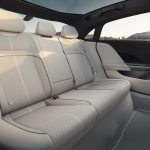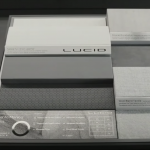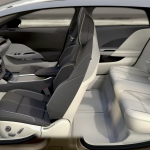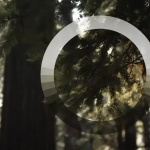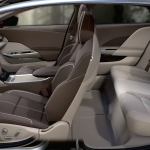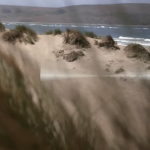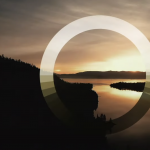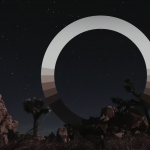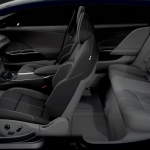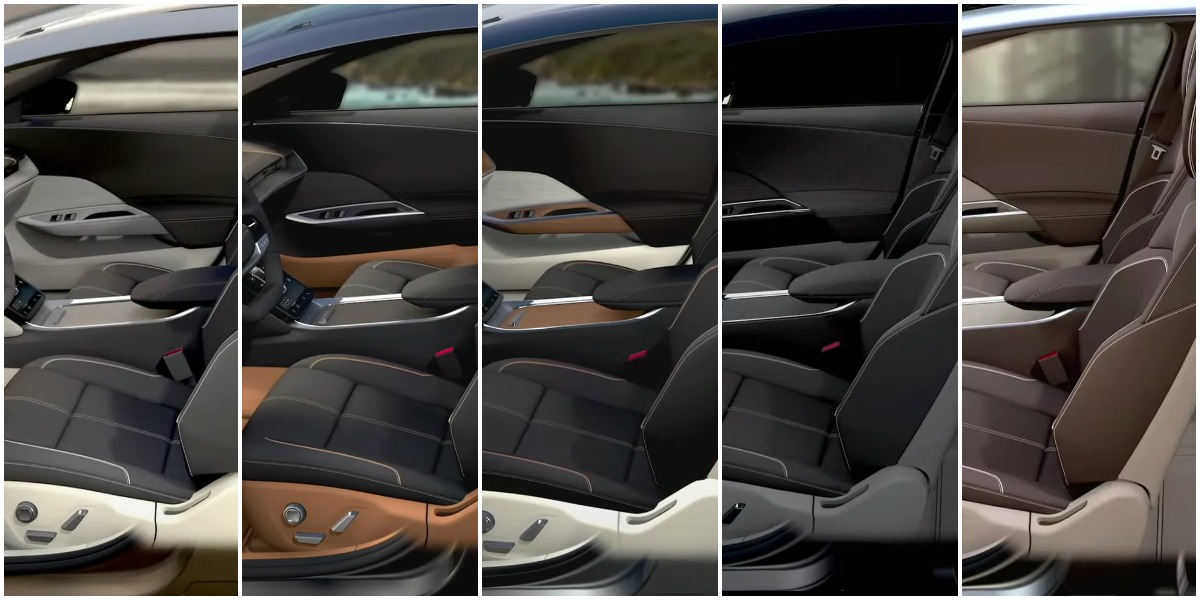
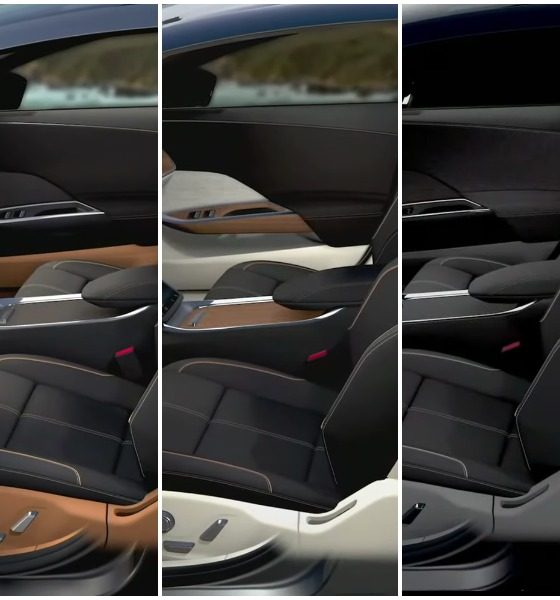
News
Lucid Air’s interior colors are an ode to California’s natural beauty
Lucid drew inspiration for its interior colors for the Air from the natural beauty of the company’s home state, California. While using different times of the day and different areas within the state to inspire colors, the company released its first production car on the birthday of California, giving an extra hat tip to the Golden State.
Lucid’s Senior Color, Materials, and Finish Manager, Sue Magnusson, was vocal about her interests in the natural beauty of objects. “I’ve always been drawn to…what makes something remarkable,” she said during the company’s unveiling event on September 9th. While trying to determine what interior colors and patterns would best fit the Air, Magnusson drew inspiration from California, and the different colors and moods the state’s areas offer.
Ultimately, the decision to draw inspiration from the company’s home state came from finding out who “Lucid” was.
“When I first started at Lucid, we really didn’t know who “we” were in a lot of ways. But, we knew we were a California company,” Magnusson said. “It became a very natural fit for us to think about doing interiors and themes that were in very specific locations within California at very specific times of the day and how the light would look like at those locations,” she added.
Santa Cruz
“We looked at the day as a 24-hour period, and we started out the beginning of the day in Santa Monica,” Magnusson said. The Santa Monica theme is available on the Dream Edition, which is the premier variant.
- Credit: Lucid Motors
“It was really about imagining Santa Monica when the sun hasn’t quite risen yet. It’s very misty and foggy, and you’re looking at this nebulous haze of greys and whites. Santa Monica is the first part of the day. It’s an awakening of starting points, and that just lent itself to our first introduction. It was this perfect, natural connection,” Magnusson said.
Lucid is using a graphite grey with a white ceramic interior while highlighting some of the car’s seats and trim with “Silvered Eucalyptus,” which is a shoutout to the driftwood that is present on Santa Monica’s beaches.
Big Basin
“At mid-morning, it was Big Basin,” a park in Santa Cruz County filled with large trees and woodsy areas, giving a natural feel to the car’s interior. Browns and tans make up this interior option, reminiscent of the views one would have if they were to venture into the Big Basin Redwoods State Park.
Santa Cruz
Santa Cruz is the next color combination and makes up for the noontime slot. Bright colors cut by dark front seats make for an exciting partnership while offering the best of both worlds for those who are looking for a taste of both light and dark interior designs.
Tahoe
The sunset timeframe was named Tahoe and provided a tan and orange combination complemented once again by black seats.
Mojave
Finally, Mojave accounts for the midnight hours where dark skies are filled with crystal clear stars that fill California’s transition into the next day.
The wide array of interior options give any buyer of Lucid’s first production car plenty of customization in terms of what they are looking for inside of the car. Drawing inspiration from the state the company calls home is a tried and true ode to the natural beauty of California.
Lucid is anticipating deliveries of the Dream variant to begin in Spring 2021. Meanwhile, the Grand Touring starts at $139,000 (Summer 2021), the Touring at $95,000 (Late 2021), and the Air at “below $80,000 (2022).”
Lucid Air unveiling: four variants, <$80k starting price, 1,080 HP, 517-mile range rating

Elon Musk
Elon Musk and Tesla AI Director share insights after empty driver seat Robotaxi rides
The executives’ unoccupied tests hint at the rapid progress of Tesla’s unsupervised Robotaxi efforts.

Tesla CEO Elon Musk and AI Director Ashok Elluswamy celebrated Christmas Eve by sharing personal experiences with Robotaxi vehicles that had no safety monitor or occupant in the driver’s seat. Musk described the system’s “perfect driving” around Austin, while Elluswamy posted video from the back seat, calling it “an amazing experience.”
The executives’ unoccupied tests hint at the rapid progress of Tesla’s unsupervised Robotaxi efforts.
Elon and Ashok’s firsthand Robotaxi insights
Prior to Musk and the Tesla AI Director’s posts, sightings of unmanned Teslas navigating public roads were widely shared on social media. One such vehicle was spotted in Austin, Texas, which Elon Musk acknowleged by stating that “Testing is underway with no occupants in the car.”
Based on his Christmas Eve post, Musk seemed to have tested an unmanned Tesla himself. “A Tesla with no safety monitor in the car and me sitting in the passenger seat took me all around Austin on Sunday with perfect driving,” Musk wrote in his post.
Elluswamy responded with a 2-minute video showing himself in the rear of an unmanned Tesla. The video featured the vehicle’s empty front seats, as well as its smooth handling through real-world traffic. He captioned his video with the words, “It’s an amazing experience!”
Towards Unsupervised operations
During an xAI Hackathon earlier this month, Elon Musk mentioned that Tesla owed be removing Safety Monitors from its Robotaxis in Austin in just three weeks. “Unsupervised is pretty much solved at this point. So there will be Tesla Robotaxis operating in Austin with no one in them. Not even anyone in the passenger seat in about three weeks,” he said. Musk echoed similar estimates at the 2025 Annual Shareholder Meeting and the Q3 2025 earnings call.
Considering the insights that were posted Musk and Elluswamy, it does appear that Tesla is working hard towards operating its Robotaxis with no safety monitors. This is quite impressive considering that the service was launched just earlier this year.
Elon Musk
Starlink passes 9 million active customers just weeks after hitting 8 million
The milestone highlights the accelerating growth of Starlink, which has now been adding over 20,000 new users per day.

SpaceX’s Starlink satellite internet service has continued its rapid global expansion, surpassing 9 million active customers just weeks after crossing the 8 million mark.
The milestone highlights the accelerating growth of Starlink, which has now been adding over 20,000 new users per day.
9 million customers
In a post on X, SpaceX stated that Starlink now serves over 9 million active users across 155 countries, territories, and markets. The company reached 8 million customers in early November, meaning it added roughly 1 million subscribers in under seven weeks, or about 21,275 new users on average per day.
“Starlink is connecting more than 9M active customers with high-speed internet across 155 countries, territories, and many other markets,” Starlink wrote in a post on its official X account. SpaceX President Gwynne Shotwell also celebrated the milestone on X. “A huge thank you to all of our customers and congrats to the Starlink team for such an incredible product,” she wrote.
That growth rate reflects both rising demand for broadband in underserved regions and Starlink’s expanding satellite constellation, which now includes more than 9,000 low-Earth-orbit satellites designed to deliver high-speed, low-latency internet worldwide.
Starlink’s momentum
Starlink’s momentum has been building up. SpaceX reported 4.6 million Starlink customers in December 2024, followed by 7 million by August 2025, and 8 million customers in November. Independent data also suggests Starlink usage is rising sharply, with Cloudflare reporting that global web traffic from Starlink users more than doubled in 2025, as noted in an Insider report.
Starlink’s momentum is increasingly tied to SpaceX’s broader financial outlook. Elon Musk has said the satellite network is “by far” the company’s largest revenue driver, and reports suggest SpaceX may be positioning itself for an initial public offering as soon as next year, with valuations estimated as high as $1.5 trillion. Musk has also suggested in the past that Starlink could have its own IPO in the future.
News
NVIDIA Director of Robotics: Tesla FSD v14 is the first AI to pass the “Physical Turing Test”
After testing FSD v14, Fan stated that his experience with FSD felt magical at first, but it soon started to feel like a routine.

NVIDIA Director of Robotics Jim Fan has praised Tesla’s Full Self-Driving (Supervised) v14 as the first AI to pass what he described as a “Physical Turing Test.”
After testing FSD v14, Fan stated that his experience with FSD felt magical at first, but it soon started to feel like a routine. And just like smartphones today, removing it now would “actively hurt.”
Jim Fan’s hands-on FSD v14 impressions
Fan, a leading researcher in embodied AI who is currently solving Physical AI at NVIDIA and spearheading the company’s Project GR00T initiative, noted that he actually was late to the Tesla game. He was, however, one of the first to try out FSD v14.
“I was very late to own a Tesla but among the earliest to try out FSD v14. It’s perhaps the first time I experience an AI that passes the Physical Turing Test: after a long day at work, you press a button, lay back, and couldn’t tell if a neural net or a human drove you home,” Fan wrote in a post on X.
Fan added: “Despite knowing exactly how robot learning works, I still find it magical watching the steering wheel turn by itself. First it feels surreal, next it becomes routine. Then, like the smartphone, taking it away actively hurts. This is how humanity gets rewired and glued to god-like technologies.”
The Physical Turing Test
The original Turing Test was conceived by Alan Turing in 1950, and it was aimed at determining if a machine could exhibit behavior that is equivalent to or indistinguishable from a human. By focusing on text-based conversations, the original Turing Test set a high bar for natural language processing and machine learning.
This test has been passed by today’s large language models. However, the capability to converse in a humanlike manner is a completely different challenge from performing real-world problem-solving or physical interactions. Thus, Fan introduced the Physical Turing Test, which challenges AI systems to demonstrate intelligence through physical actions.
Based on Fan’s comments, Tesla has demonstrated these intelligent physical actions with FSD v14. Elon Musk agreed with the NVIDIA executive, stating in a post on X that with FSD v14, “you can sense the sentience maturing.” Musk also praised Tesla AI, calling it the best “real-world AI” today.

